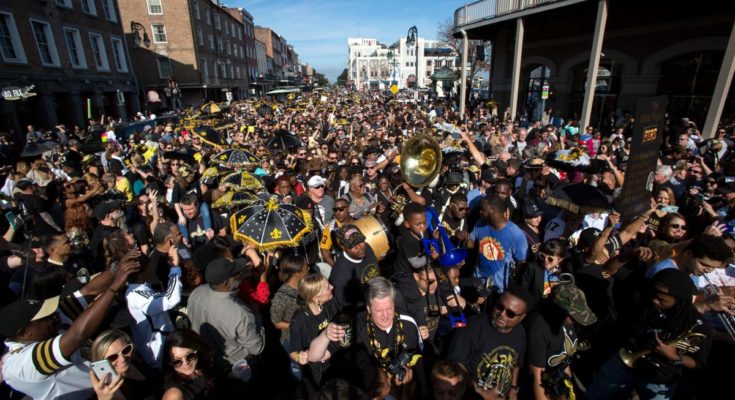It was the lowest-scoring Super Bowl ever, a universally agreed-upon snoozefest. The halftime show was forgettable. The commercials were tame.
The fans watching at home noticed, and Super Bowl broadcaster CBS paid the price.
CBS announced Monday that 98.2 million people watched the New England Patriots defeat the Los Angeles Rams, 13-3, on CBS, the smallest television audience since 2008, when the New York Giants defeated the Patriots. That is a 5 percent drop from last year, when 103.4 million people watched the Super Bowl on NBC, and a 12 percent drop from 2017, when 111.3 million people watched it on Fox. CBS said 2.6 million people streamed the Super Bowl, setting a digital viewership record, for a total audience of 100.7 million, which means compared with two years ago, people really did not care for this Super Bowl.
That was especially true in New Orleans, where a sense of righteous indignation from fans whose hometown Saints were the victims of poor refereeing contributed to the audience collapse. The Saints lost to the Rams in the N.F.C. championship game after a blown call helped the Rams send the game to overtime. The N.F.L.
s commissioner, Roger Goodell, later admitted the call was blown.

Image: The Patriots’ win over the Rams wasn’t a huge hit with television viewers.CreditAj Mast for The New York Times
Though New Orleans isn’t one of the country’s largest television markets, it is one of the most fervent for football, typically rating among the highest in the country for the proportion of households watching the Super Bowl. But Sunday’s game only earned a 26.1 overnight rating in New Orleans; last year’s Super Bowl earned a 53.0. It was the lowest rating for New Orleans in Super Bowl history.
Instead of watching the game, thousands of Saints fans staged a French Quarter protest parade. LaToya Cantrell, the mayor of New Orleans, even showed up at the Boycott Bowl concert. A number of Saints fans have filed long-shot lawsuits against the N.F.L.
#Saints fans turn their anger into a reason to party ⚜️ #BestFans pic.twitter.com/iPu583mQVe
— New Orleans Saints (@Saints) February 3, 2019
The local newspaper, The Times-Picayune, got in on the fun too. “Super Bowl? What Super Bowl?” asked the front page of Monday’s edition, which was otherwise blank. A former Saints running back, Pierre Thomas, certainly agreed, tweeting approvingly that the front page was “championship level petty.”
Fans in Kansas City, whose Chiefs lost to the Patriots in the A.F.C. championship game, were also turned off, though not nearly to the same extent. Super Bowl ratings in Kansas City were down 11 percent compared to last year.

Instead of watching the game, plenty of people in New Orleans took to the streets to protest the officiating that likely cost their team a trip to the Super Bowl.CreditMichael Democker/The Times-Picayune, via Associated Press
The Super Bowl’s smaller viewership ran counter to the success the N.F.L. had on television this season. Every time slot for N.F.L. game earned higher ratings during the 2018 regular season, a total gain of 5 percent.
The regular season pointing one way and the Super Bowl pointing another isn’t necessarily unusual. Both the 2017 and 2018 Super Bowls suffered modest overnight ratings declines from the previous Super Bowl, but they were smaller than the major viewership declines the N.F.L. suffered during both of those regular seasons.
There was also some unknown number of people who boycotted the game because of what they view as the unfair treatment of Colin Kaepernick, the former San Francisco 49ers quarterback who has not been able to land even a backup job with an N.F.L. team the past two seasons. Kaepernick became a controversial figure in 2016 when he began kneeling during the national anthem to bring attention to police brutality and other issues affecting minorities and economically disadvantaged people in America.
Despite the fourth straight year of a viewership decline, the Super Bowl will almost assuredly be the year’s most-watched program, boasting tens of millions more viewers than anything else on television. In a fragmenting market and amid declining audiences for traditional television across the board, football remains king. In 2018, 46 of the top 50 most watched telecasts were N.F.L. games. (By Kevin Draper)









